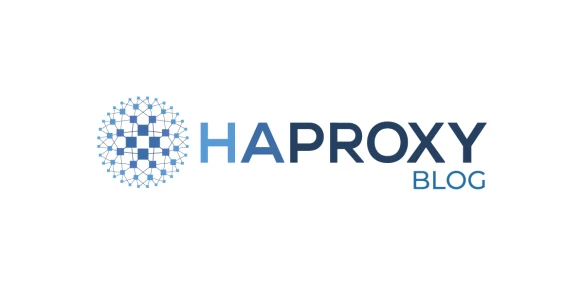
The intersection of economic uncertainty and digital transformation presents a unique challenge for businesses. With the fear of a recession looming overhead, there’s no doubt that choppy waters await, but what does this mean for IT when tech spending can significantly impact the bottom line?
While IT spending is a priority for many, businesses are still seeking ways to reduce non-essential spending and upgrade outdated infrastructure. Integrating a fast and flexible load balancer into your infrastructure is just one of the ways businesses can both work within economic restraints and meet the need for digital transformation. A fast and flexible load balancer accomplishes this by improving cost efficiency and time to value.
Business Outlook: fear of recession fuelling cost-cutting agenda
A report by Spiceworks and Aberdeen Strategy & Research, State of IT, unpacks the latest on IT budgets amid so much uncertainty. According to the report, “84% of businesses are concerned about a potential recession,” with most companies having cut costs out of fear. This fear of recession has increased from the previous year's report, yet we still haven’t hit the big recession we’ve been dreading.
Vanguard economists recently wrote in their midyear outlook that the probability of a recession occurring is still likely, “though the odds have risen that it could be delayed from 2023 to 2024.”
And so, 81% of businesses made process changes in preparation, including reducing unnecessary spending, and 74% changed their tech purchasing to reduce spend, including consolidating technologies and decommissioning unnecessary infrastructure (State of IT).
Competitive edge demands more tech investment
Despite a focus on cutting costs in anticipation of a recession, companies are still expecting to increase their overall IT budgets. According to the International Data Corporation (IDC) Worldwide Digital Transformation Spending Guide, global digital transformation spending is expected to hit $3.4 trillion in 2026 despite global constraints and economic uncertainty. This growth is expected to increase by 16.3% annually over five years.
The era of digital transformation is still upon us—and it’s because technology is essential for businesses that hope to hold a competitive edge in the market. Outdated infrastructure that limits scalability, affects the user experience, and puts uptime at risk contributes to an overall offering that is less competitive. Many businesses recognize the need to upgrade outdated infrastructure, which is one of the top factors (52%) in expected increases in IT budgets (State of IT).
While digital transformation can be understood as “keeping up with the times,” it’s also a move for businesses to become more agile. This is evident in the adoption of new technologies that allow organizations to become more responsive, deploy faster, and update software more easily. Multi-cloud, containerization, and elastic scalability are just some of the ways companies are trying to bolster their agility.
“Agility at scale goes beyond adding more agile teams and team-level practices,” according to a McKinsey report, The impact of agility: How to shape your organization to compete. “This means optimizing the full operating model across strategy, structures, processes, people, and technology.”
However, undergoing digital transformation is not easy, with more than 70% of organizations facing stalled progress at some point, according to McKinsey Global Survey, How to restart your stalled digital transformation. One of the reasons for this loss in momentum is an ineffective design of digital transformation. Businesses must consider how to control this risk to ensure digital transformation projects are delivered on time and on budget.
Resolving the tension between cost-cutting and digital transformation with better tech investment
.png)
But how do businesses navigate between cutting costs and improving their technology stack? How can they mitigate the risks of digital transformation projects, which so often stall? This might seem like an exercise in squaring the proverbial circle.
When it comes to key technology purchases, businesses should look for two attributes: cost efficiency and flexibility.
Cost-efficient tech allows businesses to be more productive and get more value out of their investment. They can do the same work for a lower cost or more work for the same cost. When planning for growth and scalability, cost efficiency is essential or growth will actually cripple a business.
Flexible tech allows businesses to approach digital transformation with fewer obstacles in the way. Flexible tech can work in more scenarios, providing continuity and lower maintenance as a business experiments and eventually transitions from older to newer technologies. Fewer obstacles mean transformation projects are less likely to stall.
Let’s consider these points using the example of the humble load balancer—one component of a greater cost optimization strategy.
How high performance improves cost efficiency in modern application deployments
When choosing a load balancer, prioritizing high performance is a strategic move toward cost efficiency. This efficiency emerges in the load balancer’s ability to optimize resource allocation.
A high-performance load balancer is characterized by high measurements for requests per second (RPS) and secure transactions per second (TPS), low latency at scale, and low resource utilization. These attributes contribute to cost efficiency in the following ways.
The load balancer itself needs less server or compute power to provide a given level of performance. As a result, businesses can reduce the infrastructure and operational costs of load balancers in their data centers or public clouds.
The load balancer processes and distributes traffic efficiently, enabling an application’s backend servers to perform more efficiently. This can unlock near-linear scaling, with each additional backend server increasing overall capacity in a linear fashion, avoiding the trap of diminishing returns that wastes resources and energy.
The load balancer offloads functions from other layers in the tech stack. For example, shifting SSL termination, rate-limiting, bot management, and web application firewall (WAF) functions to a dedicated load balancer or application delivery controller offloads these processes from application servers. This releases capacity and optimizes performance at every layer.
Choosing a load balancer that delivers this level of performance and cost efficiency enables businesses to stay within budget restrictions while advancing their application delivery. It’s all about striking a balance between performance and expenditure, and a high-performance load balancer brings the improved price-to-performance ratio you’ve been looking for.
How flexibility drives success and time-to-value in digital transformation
You should also evaluate your load balancer's flexibility and whether it fits your needs as you navigate a transitionary period of business. A flexible load balancer that adapts to changing infrastructure, use cases, and workflows makes digital transformation easier. It accelerates the pace of adopting new technologies and shortens the time gap between purchasing new infrastructure and extracting value from it.
A flexible load balancer is capable of operating in different environments (for example, in clouds, containers, virtual machines (VM), or bare metal), can work with different types of application traffic, and integrates simply with a variety of existing tools and APIs. These attributes contribute to shorter time-to-value in the following ways.
The load balancer maintains continuity while you migrate applications to new architectures, such as from on-premises to the cloud, from one cloud to another, or from monolithic applications to microservices. This reduces the number of new components that architects need to consider.
The load balancer supports the adoption of new protocols, such as HTTP/3 over QUIC, enabling businesses to absorb the benefits without deploying any new infrastructure at the reverse proxy layer.
The load balancer makes it easy to adopt new tooling, such as automation or monitoring tools. An open API for management, configuration, and data export means technical teams can adopt the latest tools to make their workflows more efficient without constraints from the underlying infrastructure.
A flexible load balancer supports where your business is now, where you want your business to go, and the transitionary period in between. It means an overall reduction in stalls and slowed progress, so businesses get to see value faster. This improved time-to-value is crucial for businesses trying to stay competitive.
Enter HAProxy: The fast and flexible load balancer

HAProxy is a compelling choice for businesses searching for a load balancer that improves cost efficiency and time-to-value.
When it comes to speed, HAProxy is regarded as the world’s fastest software load balancer. This means it’s able to handle massive traffic volumes while ensuring resources are used optimally.
Willy Tarreau, CTO of HAProxy Technologies and the original creator of the HAProxy load balancer, demonstrated how HAProxy can forward over two million HTTP requests per second on a single Arm-based AWS Graviton2 instance. HAProxy’s ability to reach market-leading performance on a single instance shows its potential for businesses looking to optimize resource utilization and cost efficiency.
Compared to basic network load balancers, HAProxy achieves the same results with only one-third of the resources. This leads to a significant reduction in costs, as shown in our HAProxyConf 2022 presentation. In this demonstration, Tarreau showed how adding HAProxy’s layer 7 load balancing could reduce cloud expenses by two and a half times and cut power consumption in half.
But HAProxy isn’t just a solution for application delivery; it’s a catalyst for propelling business forward. The product portfolio provides form factors to meet the needs of businesses using on-premises data centers or public clouds, virtual machines (VMs), or containers. Every product is customizable and extensible, allowing businesses to integrate HAProxy with existing architectures, workflows, and third-party tooling.
This level of flexibility means HAProxy makes it easy to see results and value quickly, no matter the circumstances—which are critical for businesses in transitional states, migrating their deployment environments, and adopting emerging technologies.
According to the G2 Summer 2023 Results Index for Load Balancing, HAProxy provides a return on investment (ROI) 33% faster than the category average, outperforming traditional and cloud-neutral load balancers. HAProxy’s time to value is simply unmatched, and it’s all due to HAProxy’s ability to be agile and adaptable.
Case study: The impact of performance and flexibility
HAProxy’s customer success stories showcase how high performance and flexibility help businesses reach their objectives.
In the case of DoubleVerify, the business was looking to transition from legacy hardware to technology that could keep up with the increasing demand for its digital services. Its infrastructure at the time was too costly, and the legacy hardware used didn’t offer the flexibility needed to scale out alongside traffic demands.
DoubleVerify chose HAProxy Enterprise as its replacement solution. The transition from costly, rigid load balancing to HAProxy’s high performance and flexibility significantly impacted its business. It wasn’t long until DoubleVerify saw the value in HAProxy, enabling the business to manage a staggering 5 billion daily requests efficiently, exceeding its goal by five times. Not only that, HAProxy’s cost efficiency led to a remarkable 90% reduction in costs.
Conclusion
Real-world successes like DoubleVerify underscore HAProxy’s impact on businesses navigating budget constraints and digital transformation. HAProxy’s high performance opens the door to cost efficiency that can impact the bottom line, and its flexibility is invaluable in accelerating time-to-value for businesses undergoing transformation. HAProxy is fast, fits your workflow, and catalyzes businesses seeking cost savings and success in an ever-evolving technological landscape.
TL;DR Your load balancer should be fast and flexible. If it’s not, it’s time to upgrade.
Subscribe to our blog. Get the latest release updates, tutorials, and deep-dives from HAProxy experts.


